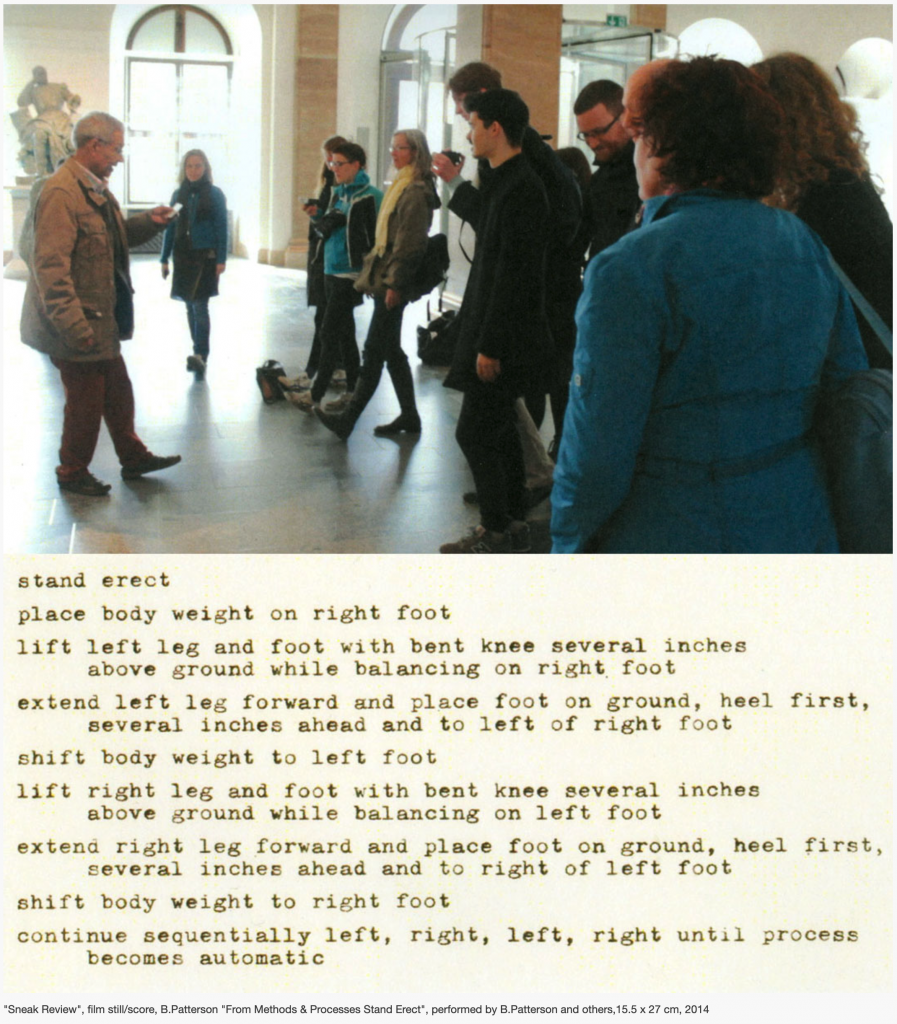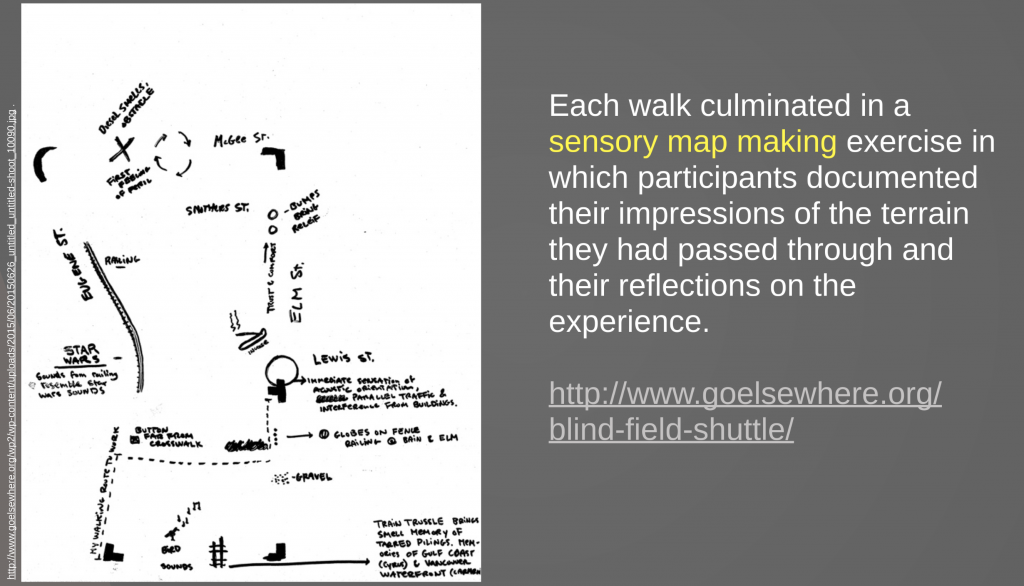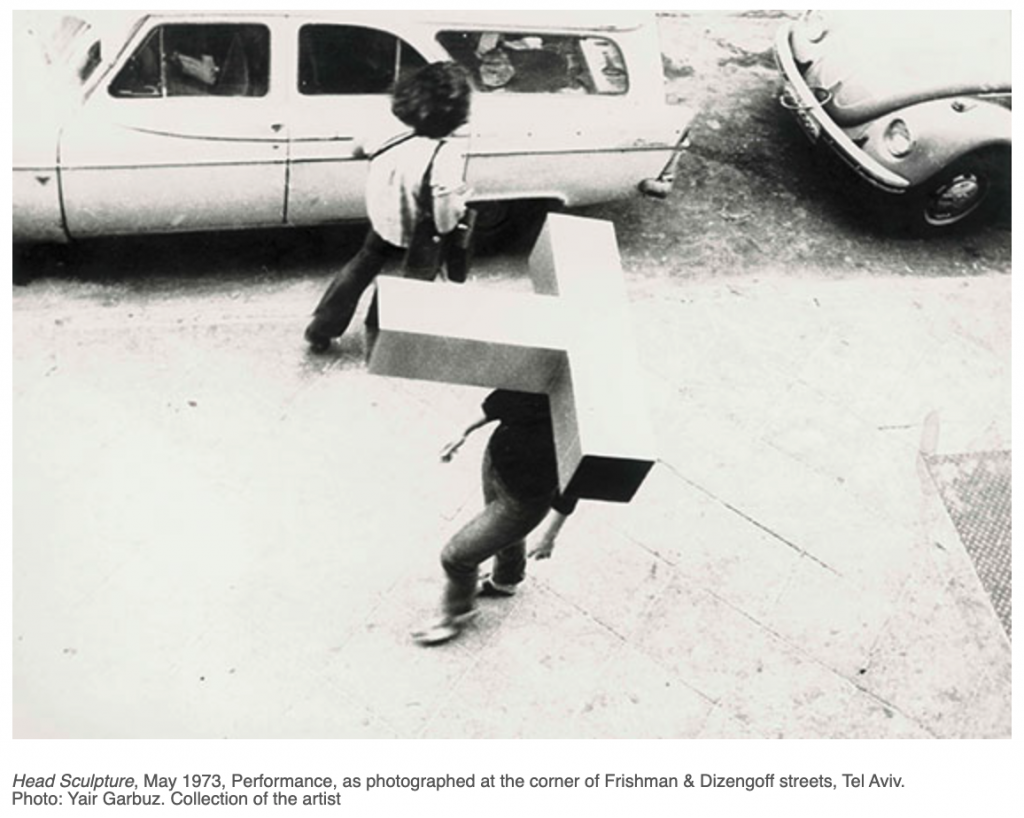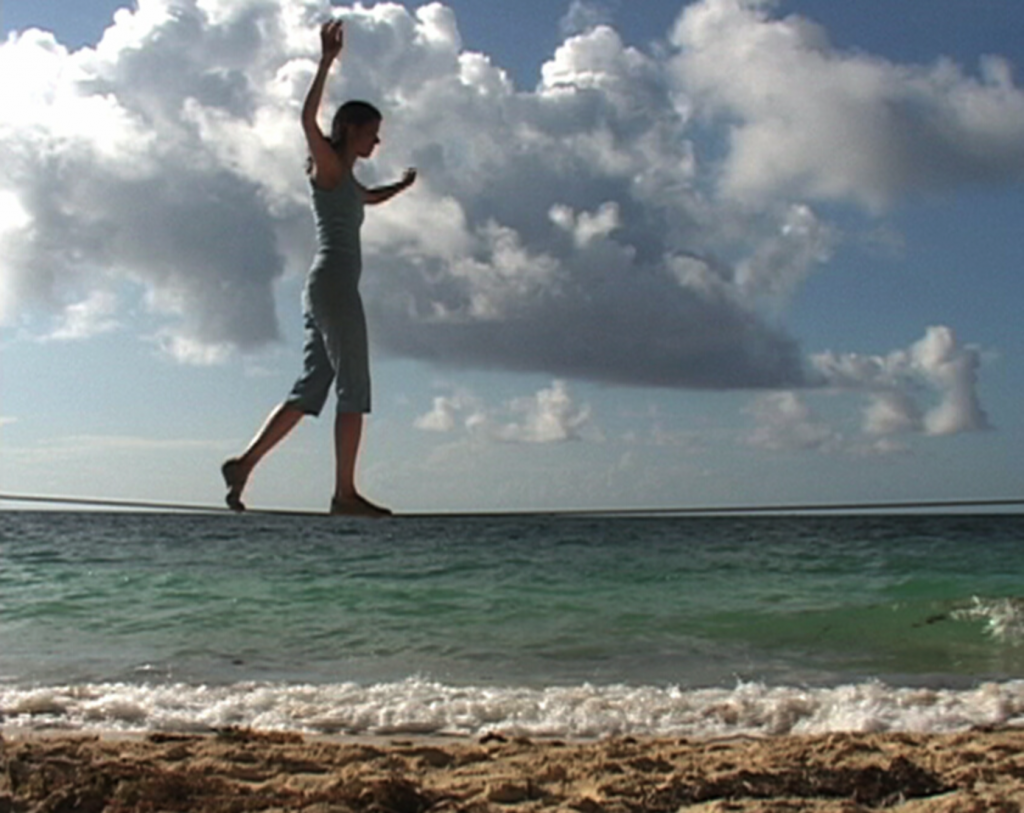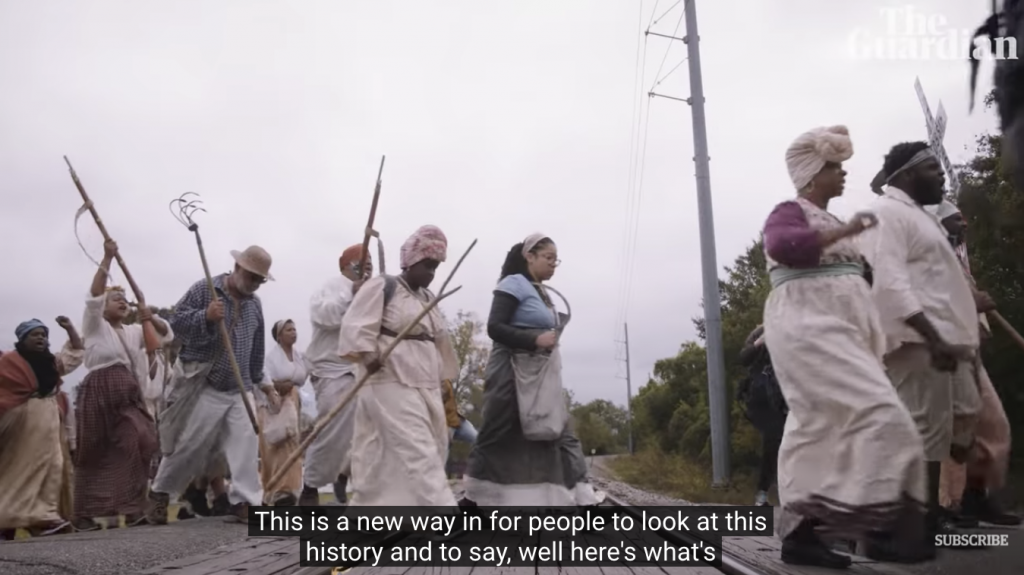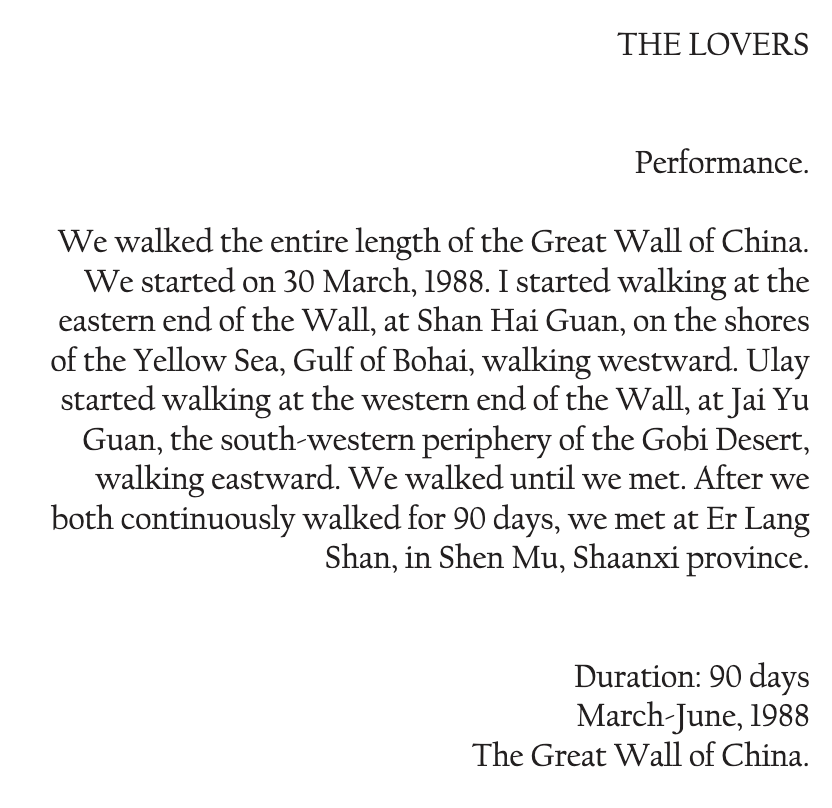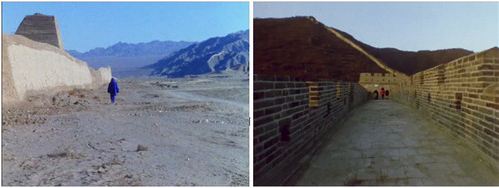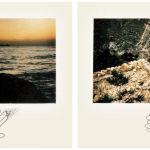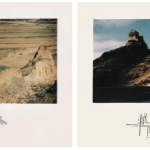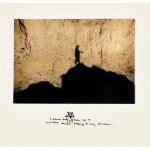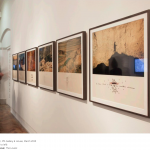
Trisha Brown “It’s a Draw/Live Feed” 2008

Trisha Brown “It’s a Draw/ Live Feed” 2003
“In these large-scale drawings, realized through performance on a stage, in a gallery, or in the privacy of the studio, signs written on the body through dance training, memory and improvisation, take the form of pictorial signs motivated by gestures traced on the page. In the It’s a Draw series, the ground of drawing, paper, which is horizontal to the floor, becomes vertical when installed on a wall, a situation that recalls conditions Brown considered fundamental when shifting her work to the proscenium stage with its perpendicular and horizontal frames of floor and stage.5 The motivation of matter by physicality echoes in relation to artistic traditions encompassing Jackson Pollock’s “action painting,” Yves Klein’s anthropometries, 1950s–1960s performance, as well as sculpture and video concerned with the body’s phenomenological experience and with process.
Of course, Brown’s singular drawing language depends on unprecedented kinesthetic articulation and memory, as well as a visual ordering that takes into account improvisation and composition that is simultaneously physical and visual.”
“The It’s a Draw drawings deflect form by investigating process, although over time her repertoire of indexical marks have become a versatile, dependable and autonomous visual language, an evolution that reveals the gradual differentiation, repetition, combination and invention of mark-making systems. This is reflected in two recent drawings related to the series, although smaller in scale. The first, made primarily with the feet grasping charcoal and pastel is a constellation of twirls, smudges, dashes and dots made by the “jump” of charcoal across the page. An archive of signs for unrecoverable actions, arrayed like a series of words on a white page with the empty white spaces suggesting the beat of time between drawing incidents or events.
Process, the idea of drawing as a record of the physical act of its making, is moderated by Brown’s inimitable visual intelligence and penchant for structure. Comparing a group of drawings from the It’s a Draw group will underscore how decision-making moderates the random. One recent drawing incorporates a record of procedures and edits as a further layer of (choreographic and graphic) notation such as directional arrows, writing and color. Of course, only the choreographer can read the visual signs of dance that are a presence behind each drawing’s realization, now evaporated, absent.
Technically the It’s a Draw drawings are not “blind” drawing: the eyes are open, although constantly in motion in all directions.”
Credit: “Trisha Brown: The Signs of Gesture” by Susan Rosenberg in brochure for USF Contemporary Art Museum (Brown-Brochure)
